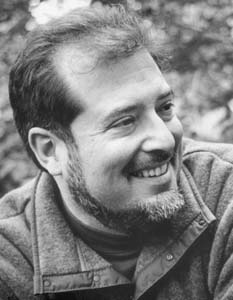![[Metroactive Music]](http://metroactive.com/music/gifs/music468.gif)
[ Music Index | San Jose | Metroactive Central | Archives ]
Brahms Boosters
Hilary Hahn and Garrick Ohlsson soared on three Brahms sonatas at Villa Montalvo
By Scott MacClelland
VIOLINIST HILARY HAHN, at age 20 already a risen star, made her South Bay debut before 250 patrons Sunday night at Villa Montalvo. That left about 50 empty seats in the Carriage House Theatre, where Hahn and veteran pianist Garrick Ohlsson teamed for the three Brahms violin sonatas. If you weren't there, you can go ahead and kick yourself. This was a recording-quality performance.
Since a recording is in the works, microphones might as well have hung here. Virtually flawless playing by both and a penetrating interpretation of the composer's distinctive style put this collaboration up there with the best of them. Even though Hahn had the sheet music out, she never actually looked at it.
More than most composers, Brahms demonstrates how primitive is the written language of music notation. The difference between what he wrote down and what it takes to reveal his personality is vast. Among the Juilliard school's violin students who have gone on to major careers, few in recent years have shown more than a superficial understanding of Brahms. Wisely, Hahn chose the Curtis Institute and the guidance of Jascha Brodsky, a pupil of the legendary Eugene Ysayë.
But then wisdom has marked Hahn's career from the beginning: witness the acclaim and awards she has collected (including the prestigious Avery Fisher Career Grant at age 15!) and the readily available CD recordings she has made for Sony. Describing Hahn's playing is easy. There were no errors. Every note was perfectly on pitch, although one--only one--landed just under its true center.
However, such left-hand perfection, while rare enough, doesn't really take account of vibrato, which, by definition, moves to either side of pitch center and functions at the service of expressiveness. In this realm, Hahn possesses a remarkable variety. To melt emotions, she favors a technique that pulls vibrato from the strings. To underscore moments of virtuosity she pushes it. Her right hand wields an artist's brush, painting tone colors across the palette of her 1863 Villaume.
These qualities alone would assure success for most instrumentalists. But Hahn went on from there, combining changes of tempo and dynamics to alternately dazzle and seduce her audience. As for showmanship, Hahn asserted herself with unquestioned sureness. Nevertheless, she found moments in each sonata for magic, casting spells by slowing the tempo and reducing the volume. Even well-known Brahms specialists often overlook such opportunities for adding character and dimension. But for Hahn, these moments came so instinctively that one would be hard-pressed to explain how they could have been taught.
In Ohlsson, Hahn had an ideal partner, one whose mastery is beyond question, whose musical intelligence has been as much praised as his stylistic authority. Continually, Ohlsson deflected his ear toward Hahn so as not to blur a ritard or contradict a cadence. He, too, added texture and flavor by pitting left-hand staccato against right-hand legato and smoothing dynamic transitions from background accompaniments to foreground outbursts and back again.
This all might have been about the playing. But Brahms was no less a winner than anyone in the room (notwithstanding its dry acoustic). A case in point was the Andante tranquillo from the Sonata in A, where haunting melodies are interrupted by an infectious Slavic dance. Just when it seemed all the juice had been squeezed from the composer's plan, Hahn suddenly dropped tempo and dynamics for a moment out of time. In that instant, no one breathed. A similar enchantment, this time inspired by sheer melody, occurred in the Adagio of the Sonata in D Minor.
All of this attention to the details of Brahms, both written and intuited, banished any doubt about the composer's greatness. If this performance was a preview to a recording (now planned for later this year), it should certainly lead to an outstanding CD. The trend these days is to make recordings before live audiences. With playing as impeccable and polished as this, that would seem to be the preferred approach.
[ San Jose | Metroactive Central | Archives ]
Copyright © 2000 Metro Publishing Inc. Metroactive is affiliated with the Boulevards Network.
For more information about the San Jose/Silicon Valley area, visit sanjose.com.
![]()
 Collaborative Gestures: Pianist Garrick Ohlsson ably assisted violinist Hilary Hahn on an evening of Brahms.
Collaborative Gestures: Pianist Garrick Ohlsson ably assisted violinist Hilary Hahn on an evening of Brahms.
From the June 8-14, 2000 issue of Metro, Silicon Valley's Weekly Newspaper.